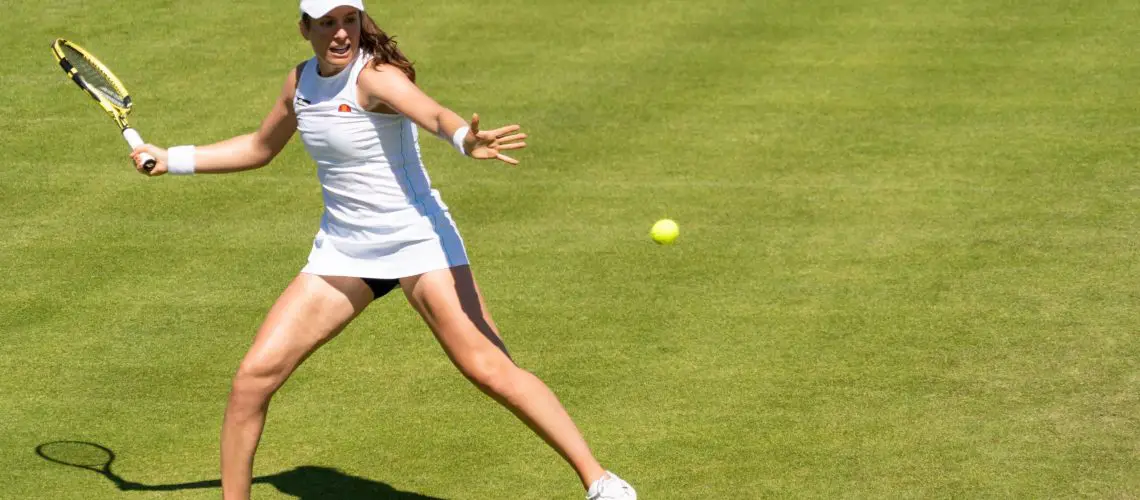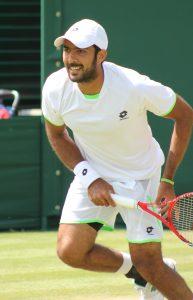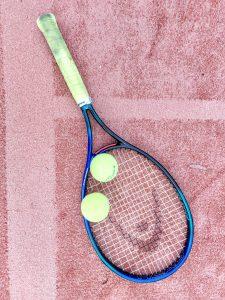We may earn money or products from the companies mentioned in this post.
Introduction

Tennis, a sport that has captivated audiences for centuries, is not just about skillful strokes and strategic plays; it’s also about the sheer power and speed at which the ball is hit Understanding how fast tennis balls are hit is crucial for both players and spectators alike It gives players an edge in anticipating their opponent’s shots and helps fans appreciate the incredible athleticism displayed on the court
The Importance of Understanding Tennis Ball Speed
In tennis, where split-second decisions can make or break a game, knowing the speed at which a ball travels can be a game-changer It allows players to gauge their reaction time, adjust their positioning on the court, and decide whether to play an offensive or defensive shot The ability to accurately assess the speed of incoming shots can be pivotal in determining the outcome of a match
For spectators, understanding tennis ball speed adds another layer of excitement to watching professional matches It enables fans to marvel at the lightning-fast serves and blistering groundstrokes executed by top-ranked players like Roger Federer or Serena Williams Being able to appreciate these incredible displays of power enhances one’s overall enjoyment and engagement with the sport
Factors Contributing to Varying Ball Speeds
Several factors influence how fast tennis balls are hit during matches Firstly, player technique plays a significant role A well-executed serve or groundstroke with optimal racket head speed can generate tremendous power behind each shot Players who have mastered techniques such as topspin or slice can manipulate ball trajectories while maintaining high speeds
Secondly, equipment choices impact ball speed Rackets with different string tensions and compositions can affect how much energy is transferred from player to ball upon contact Additionally, varying types of tennis balls (eg, regular duty or extra-duty) have specific characteristics that affect their bounce and overall speed off the racket
Another critical factor is the playing surface Different court surfaces, such as grass, clay, and hard courts, can significantly influence ball speed For example, grass courts tend to produce faster shots due to their low bounce and slick nature On the other hand, clay courts slow down the ball’s speed as it absorbs more energy upon impact
Furthermore, environmental conditions like altitude and temperature also play a role in ball speed Higher altitudes result in thinner air, which means less air resistance for the ball to overcome during flight Similarly, warmer temperatures make tennis balls travel faster due to increased elasticity
Conclusion
Recap of the importance of understanding tennis ball speed
Summary of factors contributing to varying speeds
Overall significance for players and spectators alike
Remember to remove this section before submitting your work!
Factors Influencing Tennis Ball Speed

When it comes to the speed of a tennis ball, several factors come into play From the player’s skill level and physical attributes to racket technology and environmental conditions, each element contributes to the velocity with which the ball travels across the court Let’s delve deeper into these factors and explore how they impact tennis ball speed
Player’s Skill Level and Physical Attributes
One of the key determinants of tennis ball speed is the skill level and physical attributes of the player Professional players often exhibit faster ball speeds compared to amateur players due to their exceptional technique, timing, and consistency in hitting shots Additionally, muscle strength plays a vital role in generating power behind each stroke A well-trained player with superior muscle strength can generate more force and therefore achieve higher ball speeds
Racket Technology and Its Effect on Ball Speed
The evolution of racket technology has significantly impacted tennis ball speed over time Advances in materials and designs have led to rackets that are lighter yet more powerful than their predecessors The use of modern materials such as graphite or carbon fiber enables greater stability, control, and responsiveness during shots, resulting in increased ball speeds off the racket face
Another crucial factor influenced by racket technology is string tension The tension at which strings are strung affects how much energy is transferred from the racket to the ball upon impact Higher string tensions tend to provide more control but may sacrifice some power due to decreased trampoline effect, while lower tensions offer a livelier response with potentially higher ball speeds
Ball Properties Affecting Speed Potential
The properties of a tennis ball also play a significant role in determining its speed potential on the court The air pressure inside a tennis ball can impact its bounce and speed A well-inflated ball tends to be more lively, resulting in faster speeds when struck On the other hand, an underinflated ball may have reduced speed due to its decreased bounce off the racket face
Another factor to consider is the surface wear of a tennis ball As a ball gets used over time, its outer felt covering wears down, affecting its performance on the court A new ball with fresh felt provides better grip and responsiveness, leading to higher speeds during play Conversely, a worn-out ball may have reduced speed as it loses some of its initial characteristics
Environmental Factors Influencing Tennis Ball Speed
The environment in which a tennis match takes place can also influence ball speed Variables such as altitude, temperature, humidity, and wind conditions can all impact how the ball travels through the air For instance, at higher altitudes where air density is lower, balls tend to travel faster due to less air resistance Similarly, warmer temperatures can make balls move quicker compared to colder conditions
In conclusion, tennis ball speed is influenced by various factors ranging from player skill level and physical attributes to racket technology and environmental conditions Understanding these factors can help players optimize their performance on the court and enable them to adapt their gameplay accordingly
Speed Measurements of Tennis Shots

Tennis is a game of precision and power, where the speed of your shots can make all the difference Let’s explore the different types of shots in tennis and their respective average speeds
1 Groundstrokes (forehands, backhands)
Groundstrokes are fundamental to every tennis player’s game The two main types of groundstrokes are topspin and flat shots A topspin shot involves brushing up on the ball, creating a forward spin that helps control the trajectory and adds depth to the shot On the other hand, flat shots are hit with minimal spin, resulting in a faster-paced shot
In terms of average speeds, flat shots tend to be faster than topspin shots due to their flatter trajectory However, it is essential to note that players vary in their shot speeds based on factors like technique and physical abilities
When comparing men’s and women’s average shot speeds, men generally hit harder due to their physical strength and conditioning However, there are exceptions where female players can match or even surpass male players’ speed through skillful technique
2 Serve Speeds
The serve is one of the most critical shots in tennis as it initiates each point It allows players to gain an advantage by starting offensively or putting pressure on their opponent from the get-go
World records for serve speeds have been set by some phenomenal athletes throughout history These records often exceed 150 miles per hour (240 kilometers per hour), showcasing incredible power behind each delivery
For professional players competing at elite levels, average first serve speeds range between 110-130 miles per hour (180-210 kilometers per hour). Second serves are typically slower but still reach respectable speeds, averaging around 80-100 miles per hour (130-160 kilometers per hour).
3 Volleys, Overheads, Slices, Drop Shots – Less Common Shot Types
While groundstrokes and serves dominate the game, other shot types also play a role in a player’s arsenal Volleys, overheads, slices, and drop shots are less common but can be effective in specific situations
Volleys involve hitting the ball before it bounces on your side of the court Overheads are powerful shots executed when the ball is above shoulder height and allows players to smash it with force towards their opponent’s court Slices create spin by cutting across the back of the ball, resulting in lower bounce and increased control Lastly, drop shots involve delicately placing the ball just over the net to surprise opponents with its lack of pace
Methods Used to Measure Tennis Ball Speed During Matches

1 Radar Guns Explained
Radar guns are commonly used devices for measuring tennis ball speed during matches These guns emit radio waves that bounce off moving objects like tennis balls and calculate their speed based on how quickly they return
Radar guns offer high accuracy levels in determining shot speeds and provide real-time data during matches They are typically placed at strategic locations around the court to capture both serve speeds and groundstroke velocities
2 Other Technologies Used for Tracking Player Performance Statistics
In addition to radar guns, various technologies aid in tracking player performance statistics in tennis One such technology is Hawk-Eye, which uses multiple cameras positioned around the court to track the trajectory of each shot accurately
Hawk-Eye not only provides information about shot speed but also offers insights into shot placement accuracy and whether the ball landed inside or outside the court boundaries This data helps players and coaches analyze and strategize their game plan more effectively
Training Exercises to Improve Shot Power

To enhance shot power in tennis, players can incorporate specific training exercises into their routines These exercises focus on developing strength, explosiveness, and technique
Some effective training exercises include weightlifting for building overall strength, plyometrics to improve explosive power, medicine ball throws to enhance core stability and upper body strength, and resistance band drills to develop speed and agility
In addition to physical training, players can also work with coaches or trainers who specialize in shot technique to fine-tune their strokes Through targeted practice and expert guidance, players can maximize their shot power potential
Remember that shot speed is not the sole determinant of success in tennis Strategy, consistency, placement accuracy, and mental fortitude all play crucial roles in a player’s overall performance on the court
Conclusion: How Fast are Tennis Balls Hit?

In conclusion, the speed at which tennis balls are hit can vary significantly based on several factors These factors include player skill levels, rackets used, ball types, and environmental conditions By understanding these variables, we can gain insights into the dynamics of a tennis match and appreciate the incredible athleticism and precision required to generate high ball velocities
Player Skill Levels
The skill level of a tennis player plays a crucial role in determining the speed at which they can hit a tennis ball Professional players have honed their technique over years of practice, allowing them to generate immense power and speed with their shots On the other hand, beginners or recreational players may not have mastered the same level of technique and strength, resulting in slower ball velocities
Rackets Used
The type of racket used also influences how fast a tennis ball can be hit Modern rackets are designed with advanced materials and technologies that enhance power transfer from the player’s swing to the ball Rackets with larger sweet spots allow for greater control and higher speeds Additionally, string tension plays a role in generating more power during impact
Ball Types
Different types of tennis balls can affect the velocity at which they are hit Tennis balls come in various categories such as regular duty, extra duty, pressureless, or high altitude Each type has unique characteristics that influence its bounce and responsiveness to impact Certain balls may offer more resistance or compression upon contact with the racket, affecting shot speed
Environmental Conditions
The environment in which a tennis match takes place also contributes to varying ball velocities Factors such as air temperature, humidity, altitude, and wind speed all play a part in altering how fast a tennis ball travels through the air Higher temperatures and lower altitudes generally result in faster shots, while cooler temperatures and higher altitudes may lead to slower ball speeds
Overall, the speed at which tennis balls are hit is influenced by a combination of player skill levels, racket technology, ball types, and environmental conditions By considering these factors, we can appreciate the complexity and dynamics of tennis as a sport that demands both technique and adaptability So next time you watch a thrilling tennis match, take a moment to marvel at the incredible speeds reached by those tiny yellow spheres
Useful Links

Why It’s Almost Impossible to Hit a 160 MPH Tennis Serve
how fast can the pros hit their groundstrokes? – Talk Tennis
How To Hit A Tennis Ball
Increasing Ball Speed in Tennis
World’s Fastest Men’s & Women’s Tennis Serves Ever …
Do Tennis Balls Move Faster Than Shuttlecocks?
How to Hit Really Really Hard (Without Missing)
Mastering the contact point: How to read the ball and get in …
How to Handle Fast Balls in Tennis
How to Serve a Tennis Ball (with Pictures)
BALL SPEED AND REACTION TIME …
Fastest recorded tennis serves
Maximum Speed of a Ping Pong Ball – Table Tennis
How Do They Measure Tennis Ball Speed?
Technique: The Five Controls of the Ball
Speed of a Table Tennis Ball & Comparison with other sports
How To “Watch The Ball” Like A Pro In Tennis
The science behind a high-impact tennis technique






